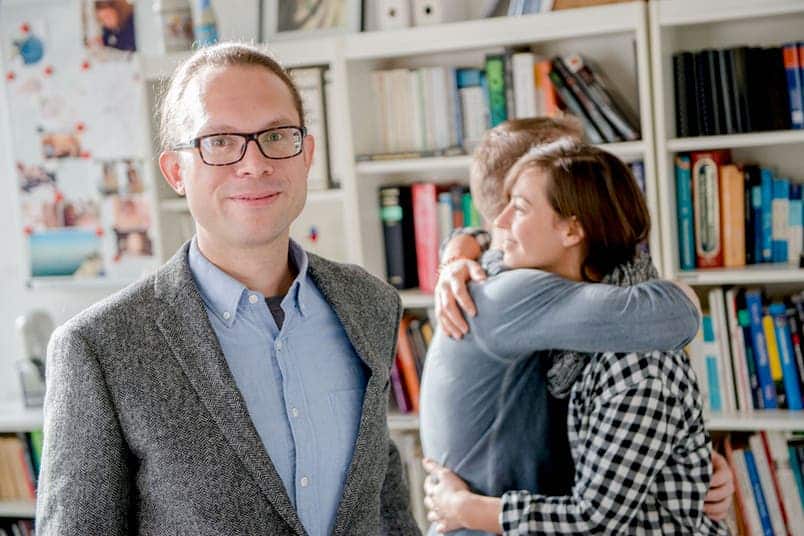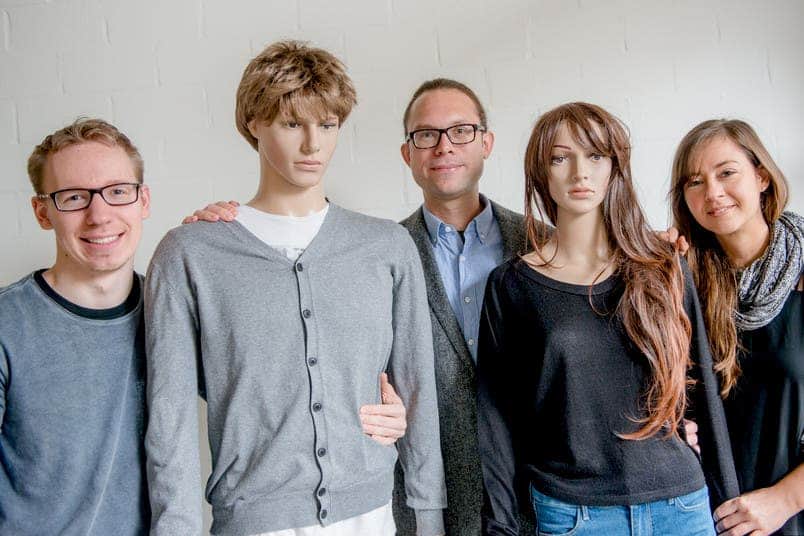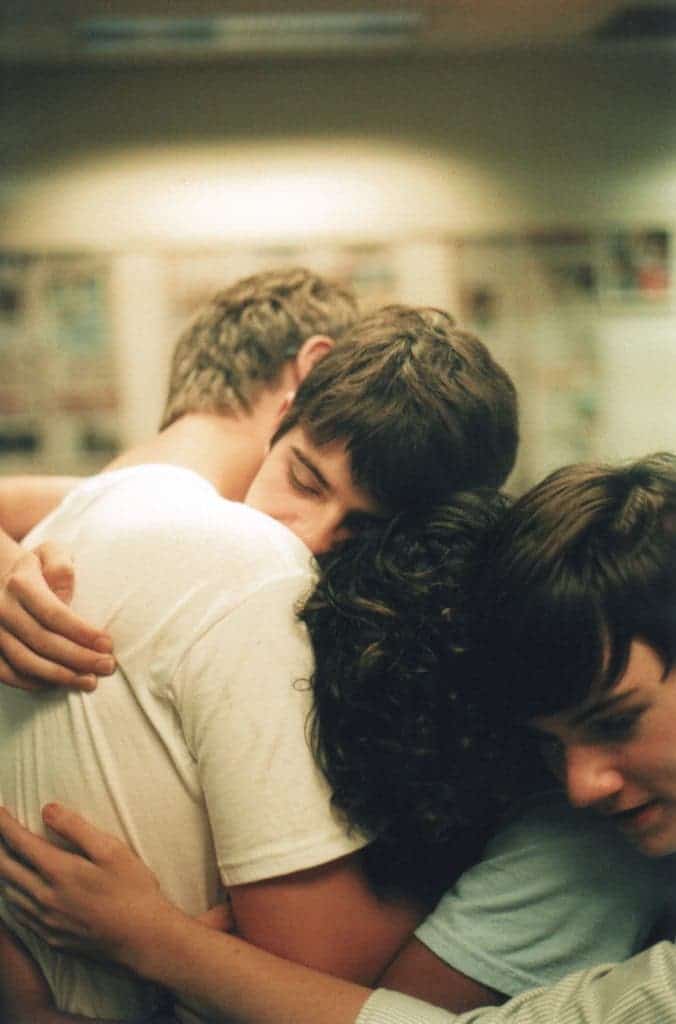Hugs are an important part of communication, and feelings are an important part of hugs, a new study confirms.

Sebastian Ocklenburg (left) and his colleagues wanted to know if hug-related behavior is affected by the emotional context of the given situation. Here, Julian Packheiser gives a hug to Noemi Rook. Image credits: RUB, Marquard.
Of course, we hug people differently based on how we feel — both in regards to the person we’re hugging, and the general situation. But researchers wanted to take it one step further and looked especially from what side the hug is made based on our feelings. A team from Ruhr-Universität Bochum (RUB), headed by Julian Packheiser, Noemi Rook and assistant professor Dr. Sebastian Ocklenburg set out to map how we hug other people.
“We wanted to know if hug-related behaviour is affected by the emotional context of the give situation,” explains lead author Julian Packheiser. “Moreover, we wanted to find out if motor characteristics such as handedness determine the lateralisation of the embrace.”
They started by analyzing 2,000 embraces at a German airport (split roughly half-half between departures and arrivals). For the departures hugs, they assumed that the people in the hug experienced mostly negative emotions — once because they were saying goodbye to their loved ones, and secondly because studies have shown 40% of travelers have a fear of flying. For the arrival hugs, the situation was exactly the opposite: people were happier because they were reunited with their loved ones and happy that the flight was over.
Researchers also analyzed more than 500 hugs on Youtube, where they found clips of actors who offered blindfolded hugs to strangers in the street. Consistent with what was previously reported, it was shown that people have a preference for right-side hugs. Left-side hugs are more associated with negative feelings. Researchers believe this happens because emotions are processed in the right side of the hemisphere, which controls the left side of the body.
“This is because of the influence of the right hemisphere, which controls the left side of the body and processes both positive and negative emotions,” Packheiser explains. “When people hug, emotional and motor networks in the brain interact and cause a stronger drift to the left in emotional contexts.”
However, another explanation was plausible: handedness. Most people are right-handed, so they might just be hugging on the side they’re more comfortable with.

Julian Packheiser (left), Sebastian Ocklenburg (middle) and Noemi Rook with the mannequins they used. Image credits: RUB, Marquard.
In order to figure this out, scientists then asked 120 test participants to hug a mannequin after they had listened to happy, neutral, or sad stories.
They found that handedness and footedness also play a role, but not enough to fully explain what researchers were seeing. In other words, our hand and foot preference does play a role, but our feelings still influence how we hug people.
“Handedness and footedness can indeed predict the lateralisation of an embrace,” says Julian Packheiser. Right-handed people tend to hug the other person from the right side, much more often than left-handed people.
Interestingly, men-only hugs were an outlier and tended to be much more left-oriented. This might happen because most men see hugs with other men as something generally negative — even when they’re not experiencing negative feelings.
“Our interpretation is that many men consider embraces between men to be something negative; therefore, they tend to perceive hugs as negative even in a neutral situation, such as saying hello,” opines Sebastian Ocklenburg.
Hugs are an expression of intimacy, universal in human communities (though more prevalent in some than others). A hug is often a form of non-verbal communication; you can say a lot to someone through the way you hug them. Studies have also demonstrated health benefits to hugs: hugging someone for 20 seconds or more favors the release of oxytocin and helps to temporarily reduce blood pressure. However, hugs are seen by some an invasion of personal space, so tread carefully.
Journal Reference: Julian Packheiser, Noemi Rook, Zeynep Dursun, Janne Mesenhöller, Alrescha Wenglorz, Onur Güntürkün, Sebastian Ocklenburg. Embracing your emotions: affective state impacts lateralisation of human embraces. Psychological Research, 2018, DOI: 10.1007/s00426-018-0985-8










